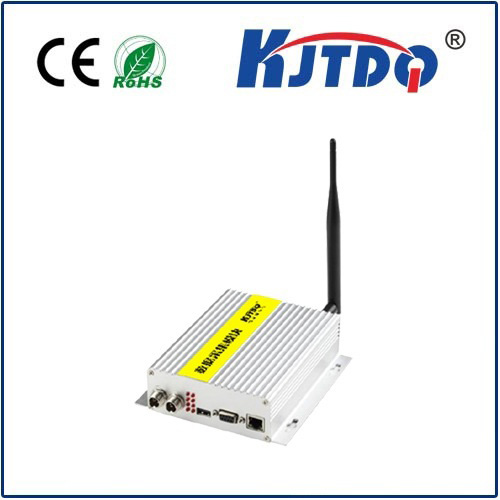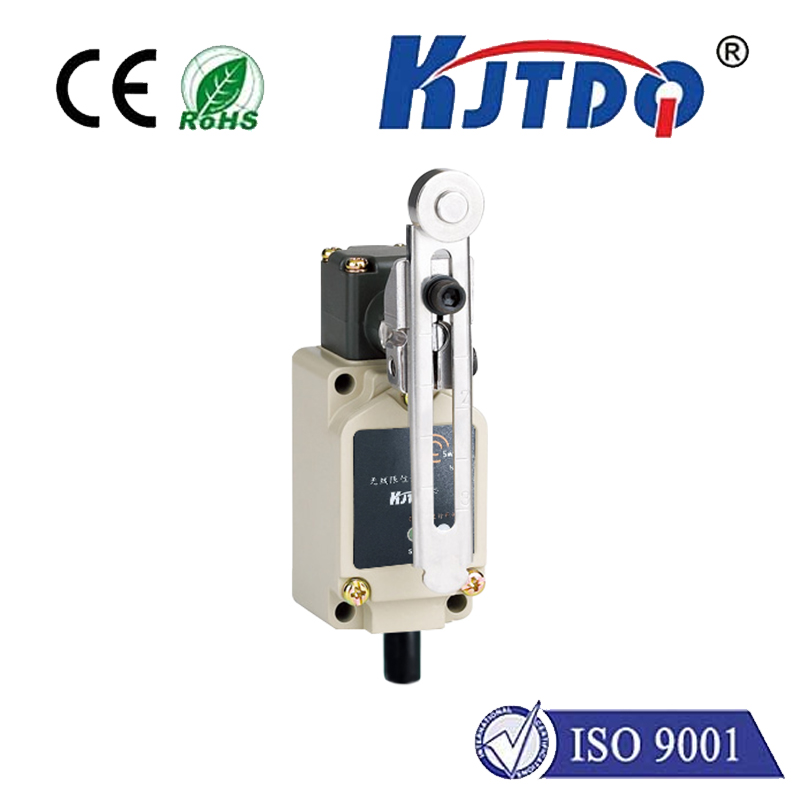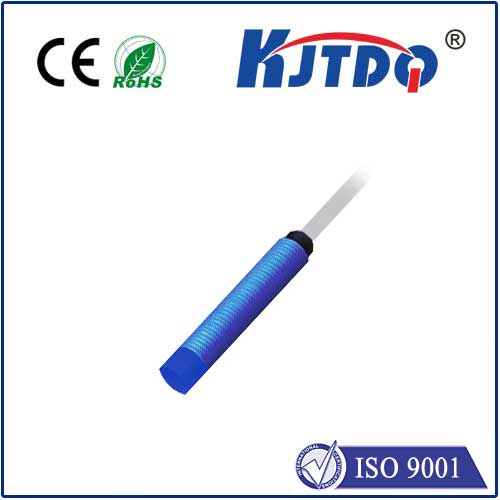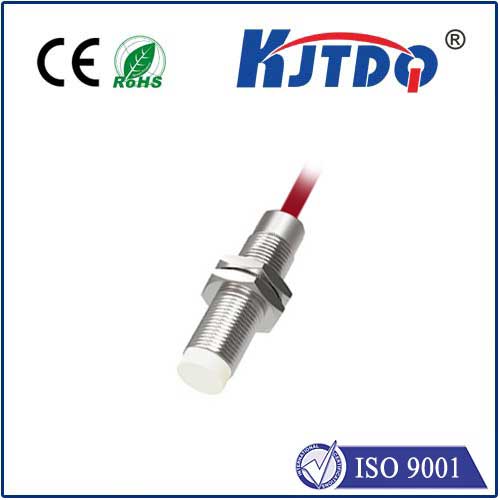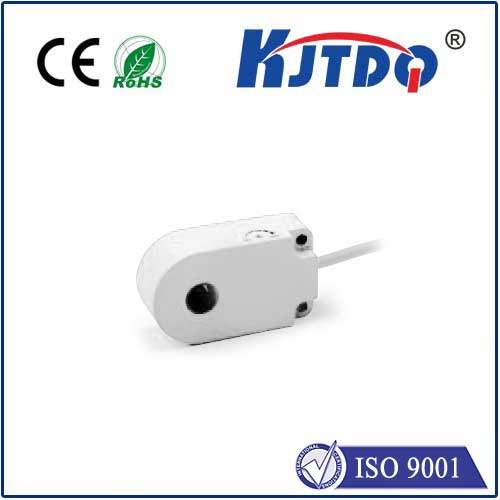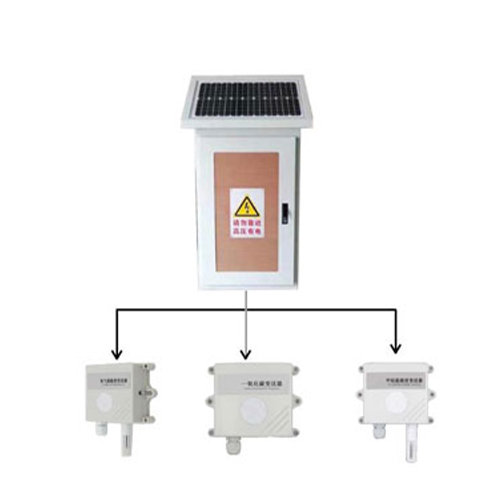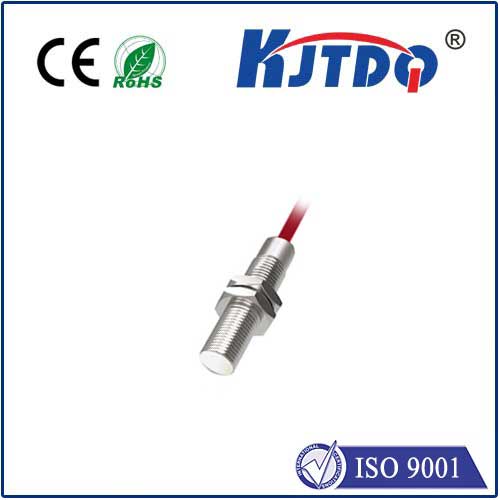inductive proximity sensor 8mm
- time:2025-09-09 02:15:05
- Click:0
The Mighty 8mm: How Inductive Proximity Sensors Revolutionize Detection
In the bustling heart of modern automation – from humming factory floors to robots assembling gadgets – lies an unassuming hero: the inductive proximity sensor. Specifically, sensors with an 8mm sensing range have carved out a critical niche, offering a potent blend of precision, reliability, and compact design. Understanding their unique strengths reveals why they are a cornerstone technology for countless detection and positioning tasks.
Demystifying the Inductive Principle at 8mm
At its core, an inductive proximity sensor operates through the magic of electromagnetism. It doesn’t need physical contact; instead, it generates a high-frequency electromagnetic field radiating from its sensing face. When a conductive metal target (like steel, copper, aluminum, or brass) enters this field, circulating currents known as eddy currents form within the target material. This interaction dampens the sensor’s internal oscillation energy.
The sensor’s sophisticated electronics constantly monitor this oscillation amplitude. The key trigger point is the 8mm sensing distance. When the metal object approaches within this specified 8mm range, the dampening effect reaches a critical threshold. The sensor’s internal circuitry detects this significant shift and instantaneously switches its output signal, signaling the presence of the target. This entire process happens contactlessly and remarkably fast.

Why the 8mm Range? Key Advantages and Features
Sensors with an 8mm sensing range represent a sweet spot for many industrial applications:
- Optimal Balance of Size and Range: The 8mm diameter sensing face provides a robust detection range without the bulk associated with larger sensors. This compact footprint is crucial for space-constrained machinery and intricate tooling where every millimeter counts.
- Enhanced Precision: An 8mm sensing distance offers sufficient “breathing room” for reliable detection while still demanding reasonably precise positioning. This makes them ideal for tasks like verifying part presence on an assembly line, counting metal objects, or detecting end positions on pneumatic cylinders.
- Rugged Reliability: Designed for harsh industrial environments, inductive sensors are inherently robust. The 8mm variants often feature sturdy metal or PBT housings, offering excellent resistance to dust, dirt, oil, coolants, and mechanical impact. With no moving parts to wear out, they boast exceptional longevity.
- Environmental Immunity: Unaffected by ambient light, water mist, or non-metallic debris (like sawdust or plastic chips), inductive sensors offer stable performance where optical sensors might falter. Their immunity to vibration and shock further solidifies their reliability.
- Shielded vs. Unshielded: Key variations exist within the 8mm category. Shielded (Flush-mountable) sensors allow installation flush in metal without affecting their sensing field, maximizing mounting flexibility near conductive structures. Unshielded (Non-flush) sensors typically offer a slightly longer sensing range (like 8mm vs. 5mm for shielded equivalents), ideal when surrounding material isn’t metallic. Choosing the right type is critical for optimal performance.
Where the 8mm Inductive Sensor Shines: Common Applications
The versatility of the 8mm inductive proximity sensor ensures it’s ubiquitous across industries:
- Manufacturing & Assembly: Detecting the presence or absence of metal parts on conveyors, pallets, or fixtures. Verifying if a robot has successfully picked up a component. End-of-travel position detection for moving mechanisms.
- Material Handling & Packaging: Monitoring metal rollers, chains, or shafts for speed or jams. Counting metallic items (bottlecaps, cans). Confirming metal chute gates are open or closed.
- Automotive: Position sensing in engines and transmissions (e.g., gear detection). Verifying clutch or brake pedal position. Monitoring metal components along the production line.
- Machining & CNC: Tool breakage detection (detecting the absence of the tool shank). Verifying metal workpiece positioning before machining begins. Monitoring automatic tool changers.
- General Automation: Detecting piston position on fluid power cylinders (a very common use). Establishing safety interlocks on guards or doors with metal components. Monitoring fill levels in metal containers.
Selecting the Right 8mm Inductive Proximity Sensor
Consider these factors to ensure the perfect match for your application:
- Shielded or Unshielded: Determine if you need flush mounting capabilities (shielded) or maximum possible range relative to size (unshielded).
- Housing Material and Shape: Choose robust metal or engineering plastics (PBT) based on chemical exposure and impact risk. Barrel (cylindrical) is most common, but block designs exist.
- Electrical Output: Options include PNP (sourcing current), NPN (sinking current), NO (Normally Open), or NC (Normally Closed). Ensure compatibility with your control system (PLC input modules).
- Operating Voltage: Common DC voltages are 10-30VDC, ensuring compatibility with your plant’s power supply.
- Connection Type: Choices range from fixed cables (with varying lengths and jacketing like PVC or PUR) to quick-disconnect (M8 or M12 connectors) for easy replacement and wiring.
- Target Material: While primarily for ferrous metals (iron, steel), check specifications if primarily detecting non-ferrous metals like aluminum or brass, as the sensing range can decrease for these materials compared to steel. Recessed mounting might be needed for optimal range with non-ferrous targets.
- IP Rating: Look for high Ingress Protection ratings (e.g., IP67, IP68, IP69K) for resistance to dust and liquids, depending on the environment’s harshness.
The Unseen Backbone of Automation
The inductive proximity sensor with its 8mm sensing range is a testament to simple, robust engineering solving complex problems. Its ability to detect metallic objects reliably, contactlessly, and with pinpoint accuracy within its defined zone makes it an indispensable workhorse. By seamlessly integrating into the tightest spaces and enduring demanding conditions, the 8mm inductive sensor silently underpins the efficiency, safety, and precision of the automated world. Whether confirming a part is present, a cylinder has retracted, or a spindle is turning, this compact marvel proves that great capability often comes in small, precisely defined packages.






